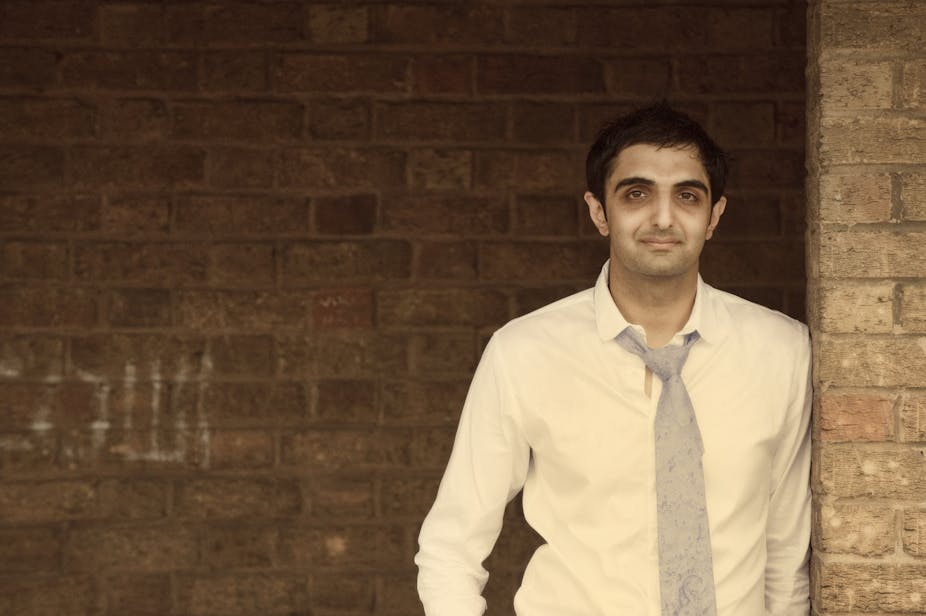Reviewers have been more or less unanimous in the terms of their enjoyment of Sunjeev Sahota’s second novel The Year of the Runaways, which has made it to the Man Booker shortlist this year. I’m not about to go against the grain. It is an eminently worthy selection and consequently will be attracting many new readers and admirers, whether or not it wins.
Sahota comes across as acutely intelligent and unpretentious and his portrayal of the life of migrant workers in the UK is obviously very topical. He has been praised for his well-drawn characters and realistic locations, which include London, Sheffield and Leeds and a range of other places to which his characters are affiliated in Pakistan and India.
It is a novel that is certainly unflinching in its picture of the shocking problems of poverty, violence, exploitation and vulnerablility that migrants face in our generation of global economy and global neighbourhood – problems of which we are often only superficially aware. The novel picks up on the current popular anxieties about migrants and thoroughly deepens and humanises the story, encouraging us to empathise with individuals.
Auf Wiedersehn, Priya
In the first chapter we are introduced to these characters as they are thrown together as casual building workers building a hotel in Leeds. Sahota used this chapter (“Arrivals”) as his contribution to that most-respected barometer of new fictions which appears once a decade from Granta magazine. The extract suggested that the novel to come might be a kind of Auf Wiedersehn, Pet for the 2010s in which the rough and tumble of a group of migrant workers provides the frame for much poignant humour and realistic everyday life. In a way the novel fulfills this expectation, although it’s not as funny as the popular 1980s TV comedy-drama (briefly revived a decade ago).

After the opening chapter, the back stories of Sahota’s male protagonists are fleshed out. These include Randeep (who has come to England on an arranged marriage visa and is wondering how he will negotiate the relationship with his wife), Avtar (on a student visa and meant to be studying in London but working instead to accumulate what money he can) and Tarlochan or Tochi (a low-caste “Chamaar” from Bihar who has lost his parents in political riots and is about to head off to Spain). Gradually emerging as the central character and linking the three is the real star turn of the novel, Narinder. She balances the deeply conflicting family, religious, ethical and emotional obligations and desires of her situation with calm resourcefulness and an impressive dignity.
The mood darkens half way through when Randeep loses his job. He joins a community of outcasts sleeping under a bridge, introducing us to the more extreme exploitations of migrant workers, who are kept virtually imprisoned, gruesomely employed cleaning accumulations of fat from the sewers and are forced to engage in petty criminality to survive.
Articulating change
Rounded and interestingly representative contemporary English characters these certainly are. “England has changed”, as Caryl Phillips puts it in his splendid novel of the African diasporia in north Yorkshire, A Distant Shore. Human characters also change and indeed, as Virginia Woolf put it back in 1910, human character itself changes, along with ethical challenges to our humanity, of which the current migrant crisis is the latest.
Novels such as Sahota’s demonstrate the vitality and urgency of the contribution that literature can make to articulate such change. They encourage imagination and empathy with the situations of those people caught within shifting circumstances.
It would be impossible to read Sahota’s book without coming to know more about the landscapes of the modern world. This education might begin with a glimpse of the Spar grocers in Sheffield’s Brightside, picking up a fair smattering of Punjabi vocabulary, to learning how many kanal make a khet and how many marleh go into a kanal. But for most readers the strengths and attractions of the novel will lie in Sahota’s ability to capture and communicate the emotional vulnerabilities and aspirations of his characters as much as the particular cultural complexities of their situations. He exposes the gaps and hidden spaces of our contemporary global society and shows how it feels to live in the gaps.
You could do a great deal worse than pay attention to this splendid novel. It is important – and may well take the prize.

